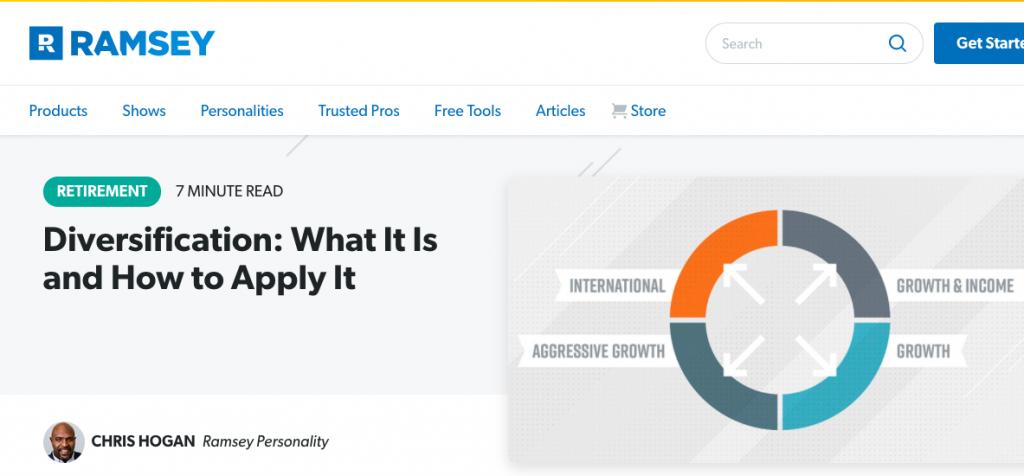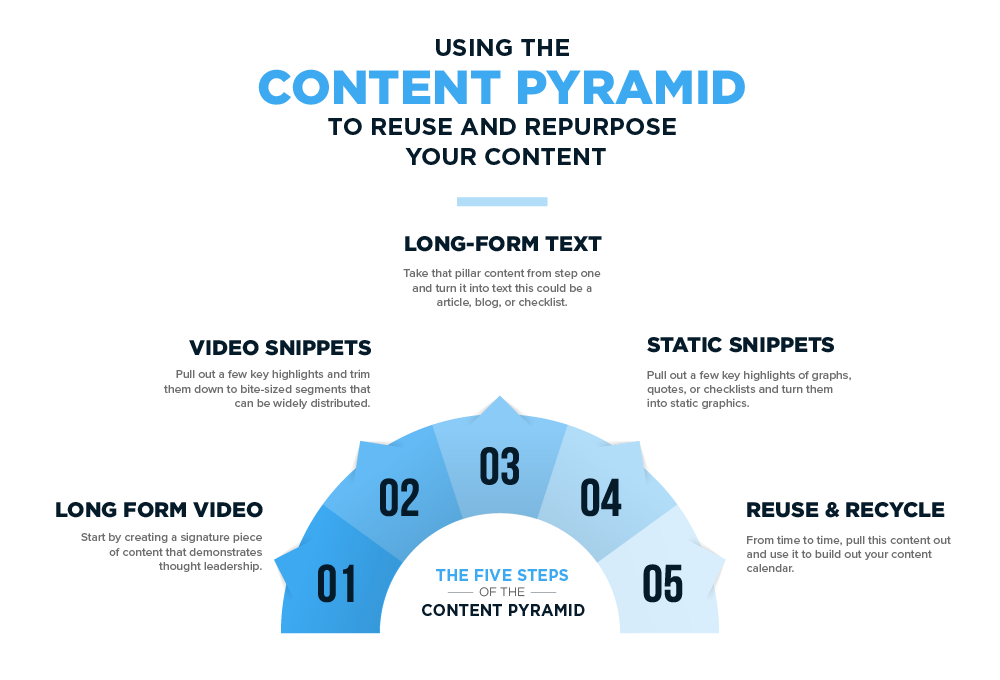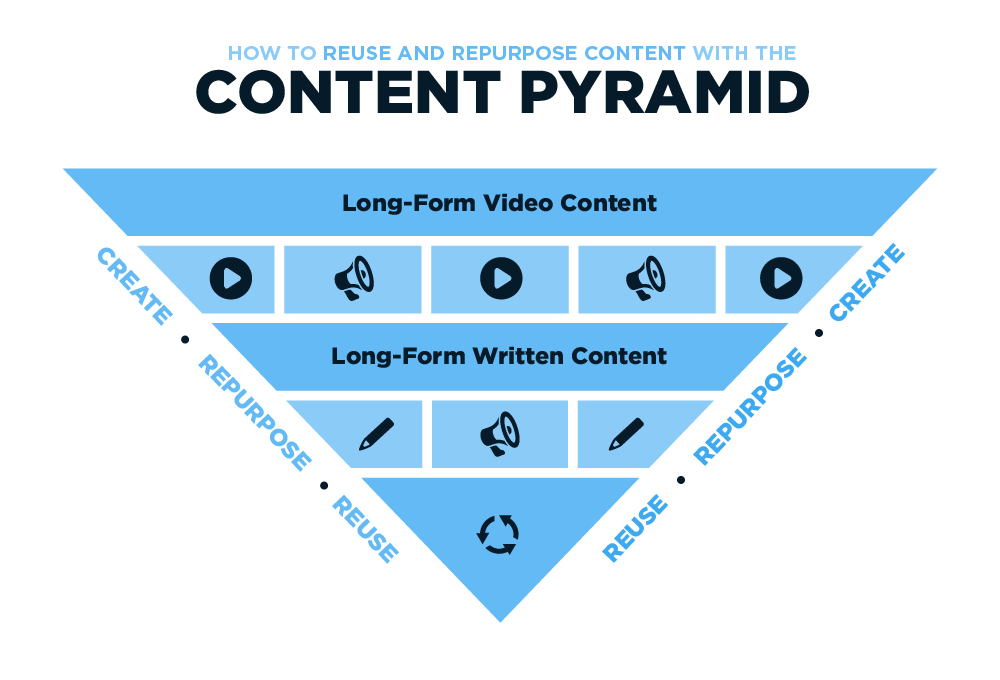Creating and distributing content at scale that is relevant, novel, and engaging is a daunting task. Having something new and insightful to say every day – when there is already so much noise – can be stressful for even the most seasoned marketers.
It doesn’t have to be that way though. By following this simple model, you’ll not only relieve some anxiety, but your content strategy will be much tighter. It all starts with creating one signature piece of content that can be broken up and reused, which will allow you to produce content at scale.
Before we jump into the model, let’s first define what content marketing is.
Content Marketing definition:
Content Marketing is creating and distributing valuable, relevant, and consistent content to attract and retain a clearly defined audience, and ultimately drive profitable customer action
When done correctly, you can build a relationship with your audience and with that trust. Once your audience is ready to convert, you’ll be the brand they trust and turn to first.
Benefits you should expect from this model:
- Clarity: this model will help you prioritize the content and messages you want to communicate with your consumers.
- Efficiently: by shifting the focus to one novel piece of content that can be reused instead of each post needing to be novel itself.
- Predictability: by breaking up pillar content into snackable pieces, you create a steady stream of predictable content.
Step by Step Guide to the Content Pyramid
Step 1: Produce Long-Form Pillar Content
Start by creating a signature piece of content that demonstrates thought leadership. Ideally, this content is a long-form video like a keynote, interview, or recorded podcast. Most of your effort should go into creating this content. This core content should closely align with your marketing goals and be new and relevant to your audience. While video content is ideal, not everyone has that at their disposal or doesn’t feel comfortable on camera.
Here are a few examples of pillar content types:
- Keynote presentation
- Interview
- Question and answer session
- eBook
- Primary & secondary research
- Blogs & articles
- Podcasts
- Courses
Polish and distribute the content you’ve just created to all relevant platforms. This might include your website, YouTube, Facebook, or anywhere that supports long-form video and is pertinent to your audience.
Example:
For our examples, we’ll use Dave Ramsey. While I don’t have firsthand knowledge about his marketing strategy or what methods his team follows, I think you can see these principles followed in his content.
Dave Ramsey and his team create a lot of long-form content with everything from keynotes to courses. Still, his primary form of pillar content is his Dave Ramsey Show radio talk show turned podcast (yes, he even has a video cameras to record each episode). His show is essentially a Q&A format where viewers call in asking financial questions for Dave to answer. Once created, the show uploaded to his website, youtube, stations that syndicate his show, and all podcast platforms.
Step 2: Create Audio & Video Snippets
Here is where things start to get easy. Now that you have your pillar video content, pull out a few key highlights and trim them down to bite-sized segments that can be widely distributed. Shoot for content that is somewhere between 5-30 seconds in length, as a best practice.
Here are a few examples of where to distribute snippets
- TikTok
- Instagram
- Stories
- Reels
- Posts
- IGTV
- Twitters
- Facebook
- Posts
- Stories
- Snapchat
Even if your pillar content isn’t in video form, this step is still relevant. Think about creating a few 15-second clips of insights from step 1. It can be as simple as making a quick TikTok or Instagram story about the highlight that you can still download and distribute.
Example:
Now let’s jump back to our Dave Ramsey example. Dave’s team is taking the freshly recorded video and breaking it into smaller pieces. These snackable bits get shared across multiple social platforms. This process takes the pressure off his team to continually be creating novel content every day. The content creation happens in step one; now, they are simply breaking it up and distributing it.
Step 3: Reimagine Long-Form Text
Here, we’ll take that core content from step one and turn it into text. This doesn’t mean making a transcript of the video (although it could). Think about how your audience will best understand the content in written form. Is that an article, how-to, blog, or guide? You may even want to embed the full-length video from step one or smaller clips from step two here. It can be a great way to add clarity to the piece. You may even consider creating additional graphics or charts to help the reader. Everyone learns differently, so having multiple approaches to how the information is presented makes it easy to address all learning styles. There is also an SEO benefit to this as pages itself can rank in addition to the video and images within that page. These assets can come in handy in step 4.
Example:
On Dave Ramsey’s website, you can find his blog, where his team has turned some of the most popular questions–like how to diversify your investment portfolio or what is a 529 plan– into articles. They then supplement this content with clips from the show or graphs and infographics, creating a well-rounded piece.

Step 4: Create Graphic and Text Snippets.
Now that we have the long-form article created, we’ll make bite-sized snippets from it (similar to step 2).
Now at this point, you may be asking yourself, won’t my customers get tired of seeing the same content over and over? But remember, it isn’t the same content. It may all tie back to a single message or topic, but the information’s delivery is different. And you are presenting different points in each execution. We often forget that just because we’ve seen every implementation of a concept, that doesn’t mean our customer has.
Here are a few examples of snippets to create:
- Quotes
- Checklists
- Definitions
- Charts
- Summaries
Now share these graphics on all your social media platforms and even your email. The goal here is to repurpose and reuse content. I would recommend thinking ahead of how you can reuse the website graphics on social media.
People who win with money are people who have a plan.
If you’re ready to STOP worrying and STOP living paycheck to…
Posted by Dave Ramsey on Sunday, August 30, 2020
While you’re working the 7 Baby Steps, use this method to save up for large expenses that you know are coming soon.
People who win with money are people who have a PLAN.
Posted by Dave Ramsey on Thursday, July 30, 2020
Step 5: Reuse & Recycle Content
You’ve done it, you’ve made it step 5! This step is the easiest of all the steps. Take all this amazing content you’ve created and save it somewhere safe. If you’ve done it right, this evergreen content will still be relevant next week, next month, and next year. From time to time, feel free to pull this content out and use it to build out your content calendar.

Conclusion
Producing content at scale all starts will long form pillar content that can be repurposed and reused. Start by getting focused on the messages and points you want to make and creating video content around that, from there simply follow the steps to repurpose the video in to bite-sized snippets.




Comments are closed.